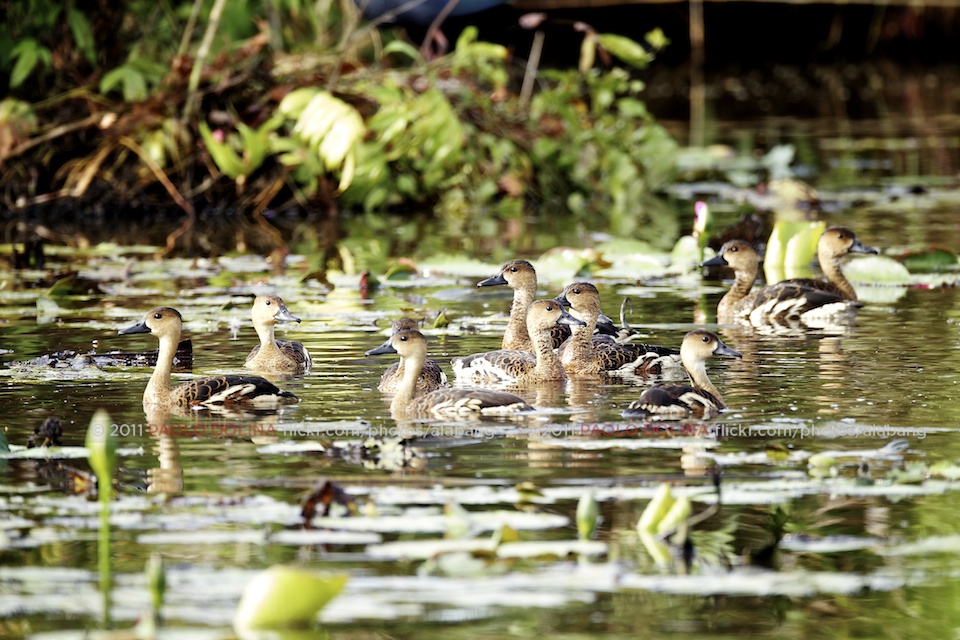Thanks!
Brush Cuckoo, Cacomantis variolosus by alabang, on Flickr
The Brush Cuckoo male is grey-brown above, light grey to buff below, with a grey head, neck and breast. The tail has a white tip and is barred white underneath. The female has two colour morphs (forms): unbarred and barred. The unbarred morph is similar to the male but is much paler buff underneath, with faint grey barring across the chest. The barred morph is less common, and has streaked/barred upper parts and the underbody is darkly barred. Juvenile Brush Cuckoos are heavily barred dark brown above and mottled and barred underneath.
Source: Brush Cuckoo (Cacomantis variolosus) - Birds in Backyards Fact sheet
Results 431 to 440 of 1262
Thread: Bird photography
-
11-17-2011, 10:57 PM #431
 Re: Bird photography
Re: Bird photography
-
11-17-2011, 11:09 PM #432
-
11-17-2011, 11:15 PM #433
-
11-18-2011, 07:20 PM #434
 Re: Bird photography
Re: Bird photography
I just saw a lot of birds in USC TC... sadly I wasn't able to capture a photo of one due to their quickness

-
11-19-2011, 07:57 PM #435
-
11-20-2011, 11:11 PM #436
-
11-21-2011, 03:37 AM #437
 Re: Bird photography
Re: Bird photography

Wandering Whistling Duck (Dendrocygna arcuata) by alabang, on Flickr
Formerly named Tree Ducks, the Wandering Whistling Duck have their new name because of their loud whistling calls and the whistling noise their wings make during flight.
They have long necks and legs and look like a cross between a goose and a duck. They have a strong head and neck with a darker crown and hindneck. The breast contains black spotting and the feathers are mostly dark brown.
They range in size from 54–60 cm in height and weigh on average 750 grams. They mainly feed on grasses, waterlillies, water plants and occasionally insects and aquatic vertebrae.
Habitat
The Wandering Whistling Duck lives in deep lagoons, flooded grasslands or dams. They enjoy the water and rarely leave the shore.
They can swim and dive with ease.
Breeding
Breeding occurs during the tropical wet season usually between December and May. During this time six to fifteen eggs are laid in a nest not far from water and usually in high grass or a sheltered area.
Source: Wandering Whistling Duck - Wikipedia, the free encyclopedia
Photographed in Barangay Marasbaras, Tacloban City, Eastern Visayas, Philippines
-
11-21-2011, 09:31 AM #438Junior Member

- Join Date
- Jun 2008
- Posts
- 417
 Re: Bird photography
Re: Bird photography

Philippine Monkey-Eating Eagle
The Philippine Eagle (Pithecophaga jefferyi), also known as the Monkey-eating Eagle, is an eagle of the family Accipitridae that is endemic to forests in the Philippines. It has brown and white-coloured plumage, and a shaggy crest, and generally measures 86–102 centimetres (2.82–3.35 ft) in length and weighs 4.7 to 8 kilograms (10 to 18 lb). Among the rarest, largest, and most powerful birds in the world, it has been declared the Philippines national bird. It is critically endangered, mainly due to massive loss of habitat due to deforestation in most of its range.Killing a Philippine Eagle is punishable under Philippine law by twelve years in jail and heavy fines.
-
11-25-2011, 04:05 AM #439
 Re: Bird photography
Re: Bird photography

Philippine Duck (Anas luzonica) by alabang, on Flickr
The Philippine Duck (Anas luzonica) is a large dabbling duck of the genus Anas. Fewer than 10,000 remain.
It has a black crown, nape and eye stripe, with a cinnamon head and neck. Rest of body is greyish brown with a bright green speculum. Its legs are greyish brown, and its bill is blue grey.
It eats shrimp, fish, insects, and vegetation, and it frequents all types of wetlands.
Photographed in Candaba, Pampanga, Philippines
Source: Philippine Duck - Wikipedia, the free encyclopedia
-
11-27-2011, 06:12 PM #440
 Re: Bird photography
Re: Bird photography

Male Brown Shrike Lanius cristatus
Advertisement
Similar Threads |
|







 Reply With Quote
Reply With Quote




